Looking for Instant Stress Relief? Try These 5 Restorative Yoga Poses
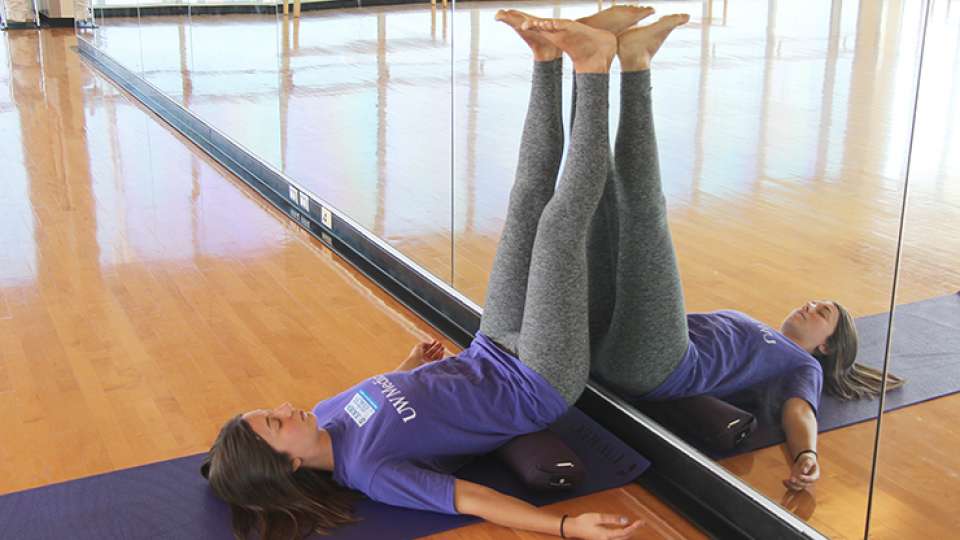
With work deadlines, family responsibilities and everything going on in the world, people are more stressed out than ever. That’s where restorative yoga comes in.
In this type of yoga, you won’t find any downward facing dog, chaturanga or warrior II poses. Instead, the focus of restorative yoga is on stillness and relaxation. The use of props, like bolsters, blankets, blocks and straps, aids in that feeling—so you can work on being calm and clearing your mind instead of worrying about trying to place your body just so in triangle pose.
Research has found that restorative yoga may improve well-being and fatigue, improve quality of life, and reduce symptoms of depression and anxiety. Yoga is also a promising tool for stress management.
3. Supported Reclining Bound Angle Pose (Supta Baddha Konasana)
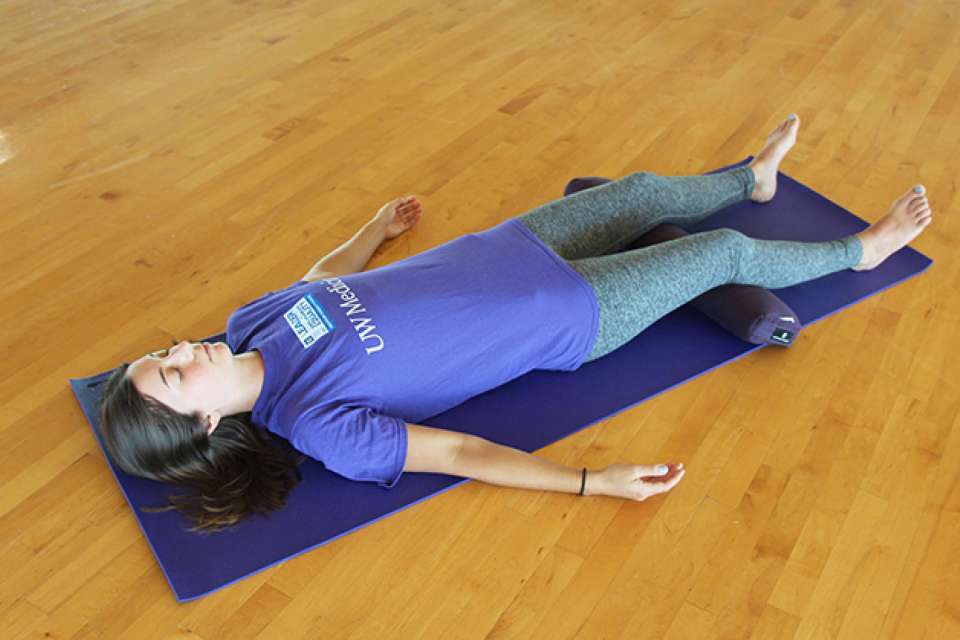
5. Corpse Pose (Savasana)
Sit with one hip against a wall. Lie on your side then roll onto your back, turning your butt toward the wall and sliding your legs up the wall. Place your hands by your side or overhead with your shoulders gently pressing into the mat. For added support, slide a bolster under your sacrum.
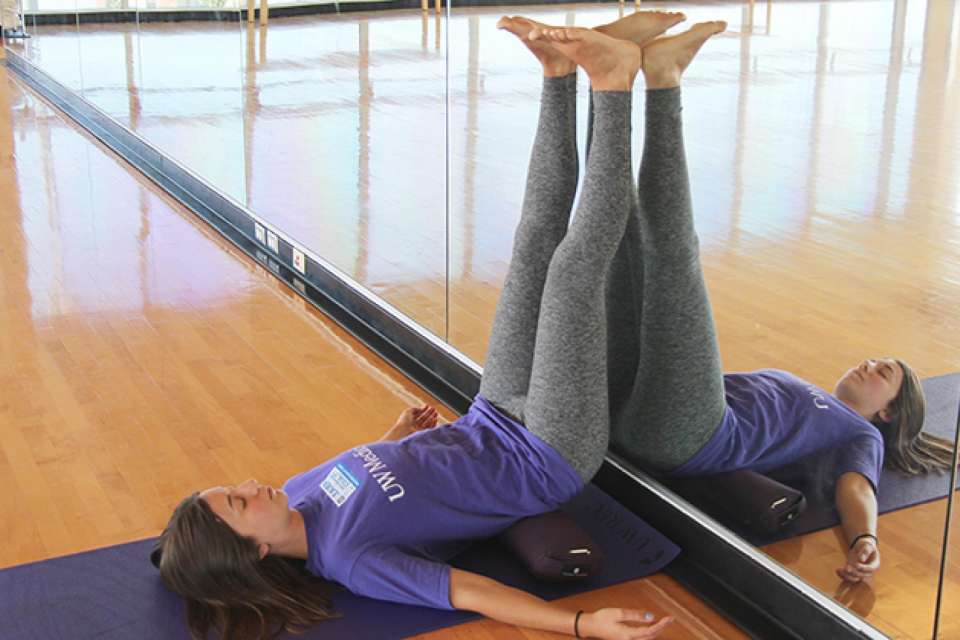
4. Legs-Up-the-Wall (Vipariti Karani)
Place a bolster long-ways on your mat and sit with your lower back pressed against the short side of the bolster. Place the soles of your feet together, knees wide. Slowly drape your back over the bolster and rest your arms by your sides. Place blocks, bolsters or pillows under your knees for support. If needed for comfort, slide a folded blanket under each arm.
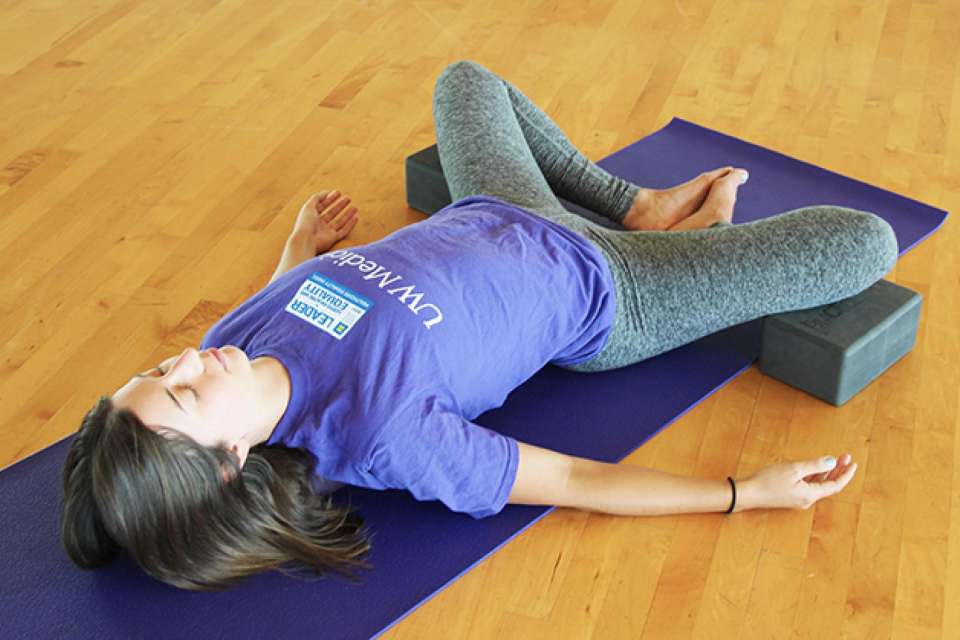
Lie on your back with your knees bent and your feet hip-distance apart on the floor. With your hands resting by your sides, begin to press down into your feet and lift your hips up off the floor. Place a yoga block under your sacrum and release the weight of your body over the block. (A stack of thick books will work in lieu of a block.) When you’re done, press your feet into the ground and lift your hips before removing the block and slowly lowering your hips back to the floor.
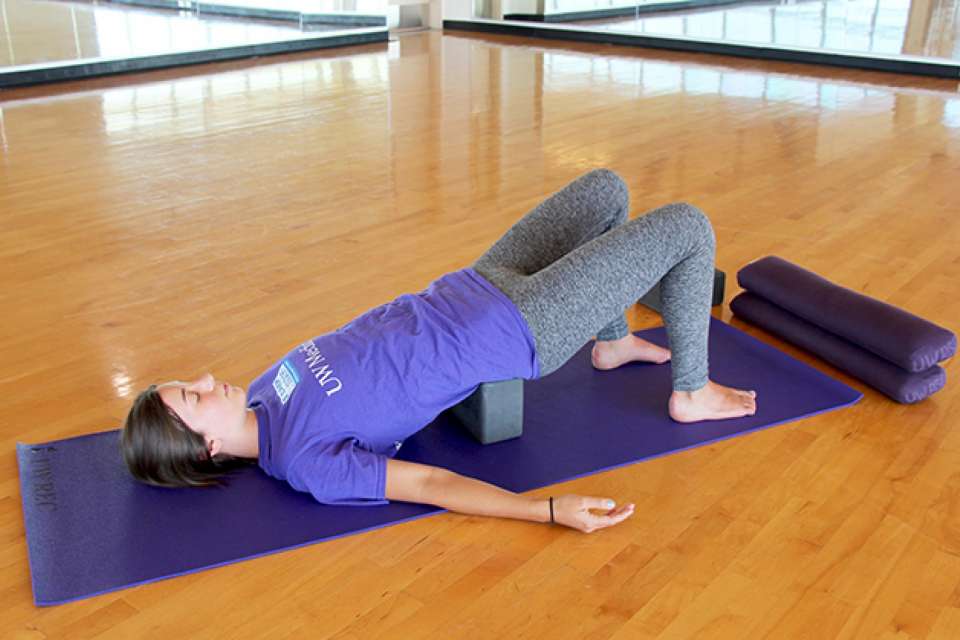
2. Supported Bridge Pose (Setu Bandha Sarvangasana)
Start on your hands and knees in a table top position with your toes untucked and tops of your feet resting on mat. Shift your hips back over your heels and extend your arms long in front of you. Gently press your big toes together as you move your knees out wide to the outer edges of your mat. Place a bolster or rolled up blanket under your torso, starting at the base of your pelvis. Gently wrap your arms around the bolster, resting on your forehead or cheek. If you’re on your cheek, switch sides halfway through.
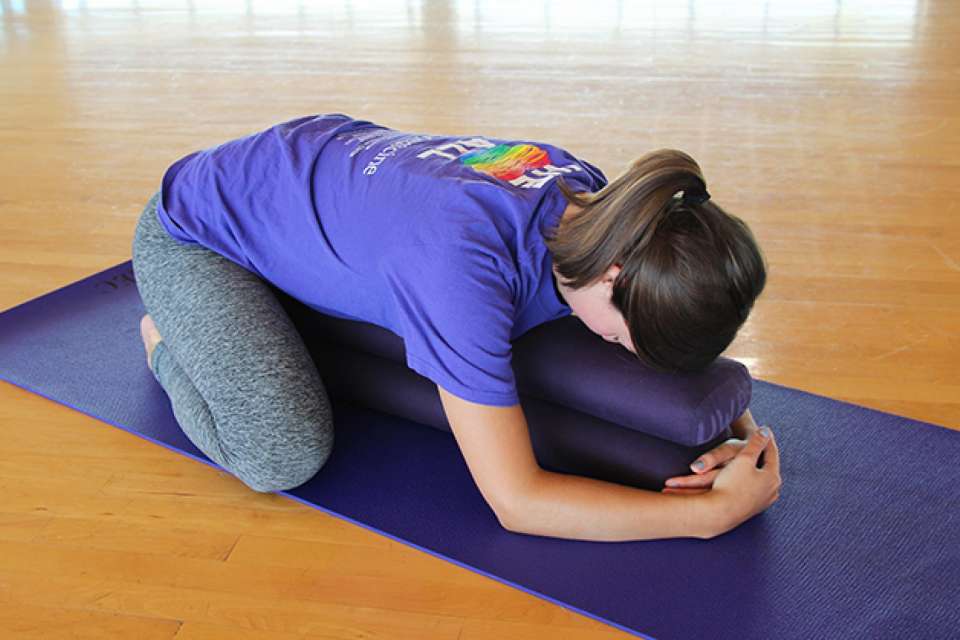
1. Child's Pose (Balasana)
5 Restorative Yoga Poses for Stress Relief
Ready to give restorative yoga a try? These five beginner-friendly poses will help you relax in minutes. Stay in each pose for about five minutes, trying to focus your attention on your breath moving in and out of your body. Try them as a sequence, or pick a favorite any time you feel stress starting to take over.
And don’t be afraid of props. In restorative yoga, or any yoga style for that matter, the more bolsters, blankets and blocks, the better. If you are using props and you’re still not completely comfortable holding a posture, move on to the next.
This could be because meditative practices, like yoga, help forge a strong connection between mind and body, says Richard Berger, M.D., professor emeritus of urology at University of Washington School of Medicine and a mindfulness-based stress relief teacher.
“You can meditate in any position, and that’s one good thing about it. Stillness of the body can promote stillness of the mind,” he says. And that’s definitely a good thing when you have a million stressful thoughts racing through your head all day long.
Lie on your back with your legs slightly apart, feet effortlessly splaying to the sides. Place your arms by your sides and relax your hands, fingers slightly curled in. For added comfort, place a bolster under your knees and a folded blanket under your head with the fold supporting your neck. Release any control of your breath and feel your body being fully supported by the floor and your props.
Photos and video were shot at the University of Washington Mindfulness Program yoga studio in the Intramural Activities Building.

 Healthy ideas for your inbox
Healthy ideas for your inbox





